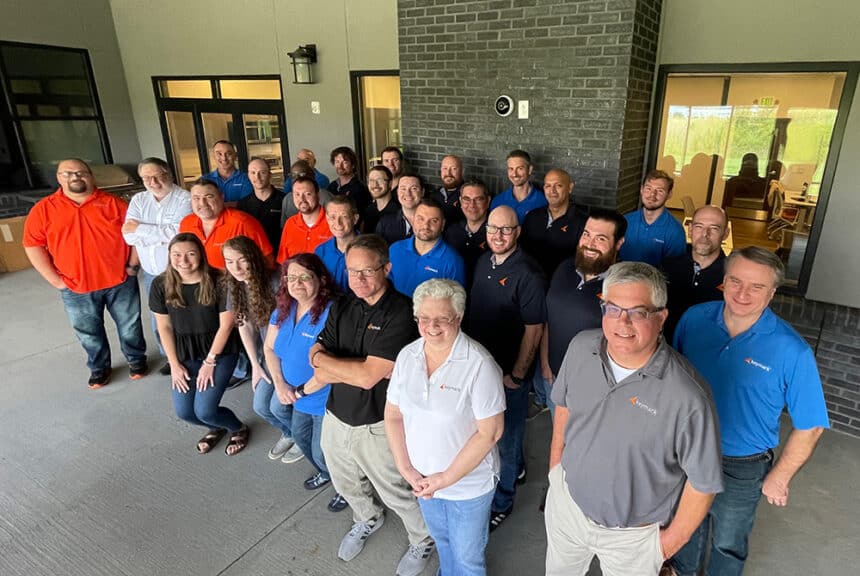In a recent 60 Minutes segment, CBS reporters revealed an unnerving trend: American workers are quitting their jobs at an explosive rate. In fact, the U.S. is facing its highest occupational quit rate since those statistics started being tracked in the year 2000. In the second half of 2021 alone, over 20 million people quit their jobs, often with no immediate plan in place for new work.
Though the movement has been given many names – The Big Quit; The Great Resignation; The Extraordinary Exodus – business leaders will all agree on calling it this: A Big Problem. Facing an employee shortage, can employers rely on technology and automation to fill the gap?
Where Automation is Already at Work
No matter the reason an employee turns in a resignation letter – more flexibility, better benefits, or simply burning out – employers are faced with a need for creativity when it comes to filling positions and accomplishing business tasks. Often, they look to technology.
Before the pandemic and mass resignations, evidence of the effectiveness of automation to perform tasks was already clear. Think of a simple trip to the grocery store. A person with a few items can enter the self-checkout line — an automated system that doesn’t require an employee — and accomplish the task of checking out much faster. Many fast-food chains have implemented self-service kiosks where patrons submit their own orders, rather than relaying them to a cashier.
Beyond the food and hospitality industries, organizations are using artificial intelligence (AI) for countless processes. The use of AI in sports has skyrocketed, where every quantifiable metric can provide insight to athletes, coaches, and executives. By examining statistics from rounds of golf at the same golf course over time, for example, AI can tell a professional golfer exactly where to hit the ball to maximize his round, and exactly where he’ll gain strokes on every other player.
Even work that was previously considered to be strictly performed by humans is now being automated. Companies are using artificial intelligence to write completely unique, logical, and optimized articles. It’s possible that the words you’re reading right now were written by a robot! (Spoiler: They are not. But these are.)
There are no signs of automation slowing down. Studies predict that by the end of 2022, the total task hours completed by humans will drop by 13%. With so much positive evidence for the effectiveness and staying power of automation, business leaders shouldn’t be afraid to turn to it as workers continue to depart.
Automation as a Supplement, Not a Replacement
The fear of many when it comes to technology in the workforce is the bleak image of a day when all jobs are performed by robots, leaving no work and no money for human beings. This, however, is not the image that most business leaders have for their companies. One study showed that the main goal of automation for 57% of employers is the augmentation of worker performance and productivity. In other words, automation can help the employees who aren’t quitting their jobs accomplish more.
This phenomenon can be seen in many of the examples listed above. A human worker at the grocery store must still be present to watch over the self-checkout machines. A chef still needs to receive orders and cook the correct food. Athletes must implement changes to their game based on statistics, and content creators still need to write and edit copy, even if a robot wrote the draft. The examples go on in every industry, but the point is: automation can help workers accomplish tasks quicker and more efficiently.
Another aspect of the mass resignation movement is the desire among workers for a greater work-life balance. According to research from the WFH Research Project, employees value flexibility in schedule and office time just as much as a 10% pay raise. With automation as a supplement, workers gain flexibility by setting up processes to run themselves. Hourly schedules can work around personal life, and overtime can become unnecessary, when a task doesn’t require constant supervision. The result is a happier workforce, albeit one that looks different than before.
Expert Solutions for a New Workforce
The technology available to business leaders today means that almost every industry, department, and job have an opportunity for automation. Anywhere an email is sent, a document is moved, or an idea is shared lies a place for greater speed and efficiency. With so many avenues and choices, employers should look to experts in automation for guidance in getting the most out of their automation investments.
KeyMark has helped organizations with intelligent automation solutions for over twenty years, offering a full slate of best-in-class software for automating business processes. As more and more employees hand in their resignation letters, process automation becomes more and more necessary.
A company struggling to manage all their crucial information after losing employees can turn to OnBase by Hyland, a leading enterprise content management system that ensures all data, processes, and workflows remain constant, even as employees change. An organization losing valuable data entry workers can look to Robotic Process Automation, a system comprised of software robots that can perform the exact same tasks a human normally would – only faster.
Ultimately, tens of millions of Americans quitting their jobs means that change is coming for employers. Those that look to automation for help are the most likely to thrive in the aftermath of ‘The Big Quit.’ With automation, processes that once required 10 employees might only require 5 – or maybe even 1! And as employees come back, those same processes can scale and grow bigger than ever before. In fact, research shows that artificial intelligence alone is expected to have a $15.7 trillion economic impact by 2030.
Whether the goal is to aid workers and help them accomplish more, to follow economic trends, or to address the effects of the largest employee exodus in decades, business leaders must come to terms with this: automation is the present and the future of the American workforce.
Where can KeyMark help your organization automate today?
Sources:



